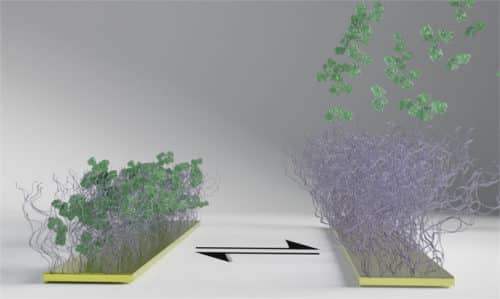Chalmers University of Technology researchers have developed a polymer that captures and releases biomolecules using electrical signals! The novel and efficient technology could have a significant impact on biomedicine research and open the way for electronic tablets and medicinal implants.
The new material is a polymer surface that changes state from trapping to releasing biomolecules in response to an electrical pulse. This could be used in a variety of ways, including as a technique for efficiently separating a drug from the other biomolecules produced by cells during the manufacturing of biological medicines.
“Our polymer surfaces offer a new way of separating proteins by using electrical signals to control how they are bound to and released from a surface, while not affecting the structure of the protein,” says Gustav Ferrand-Drake del Castillo, who publicly defended his doctoral thesis in chemistry at Chalmers and is the lead author of the study.
The substance also works in biological fluids having a buffering capability, or fluids that can reverse pH shifts. This characteristic is noteworthy because it lays the door for the development of a new implant and electronic “pill” approach that releases medicine into the body by electronic activation. “You can imagine a doctor, or a computer program, measuring the need for a new dose of medicine in a patient, and a remote-controlled signal activating the release of the drug from the implant located in the very tissue or organ where it’s needed,” says Gustav Ferrand-Drake del Castillo.

Another benefit of the new method is that it does not consume a lot of energy. The low power consumption is due to the fact that the polymer layer on the electrode’s surface is very thin, on the nanometre scale, which means that small electrochemical signals are immediately detected. “Electronics in biological environments is often limited by the size of the battery and the moving mechanical parts. Activation at a molecular level reduces both the energy requirement and the need for moving parts,” says Gustav Ferrand-Drake del Castillo.
The discoveries of the Chalmers researchers have been handed on to the spin-off business Nyctea Technologies for product development over the last year. Leading pharmaceutical researchers and companies are already customers of the company.






